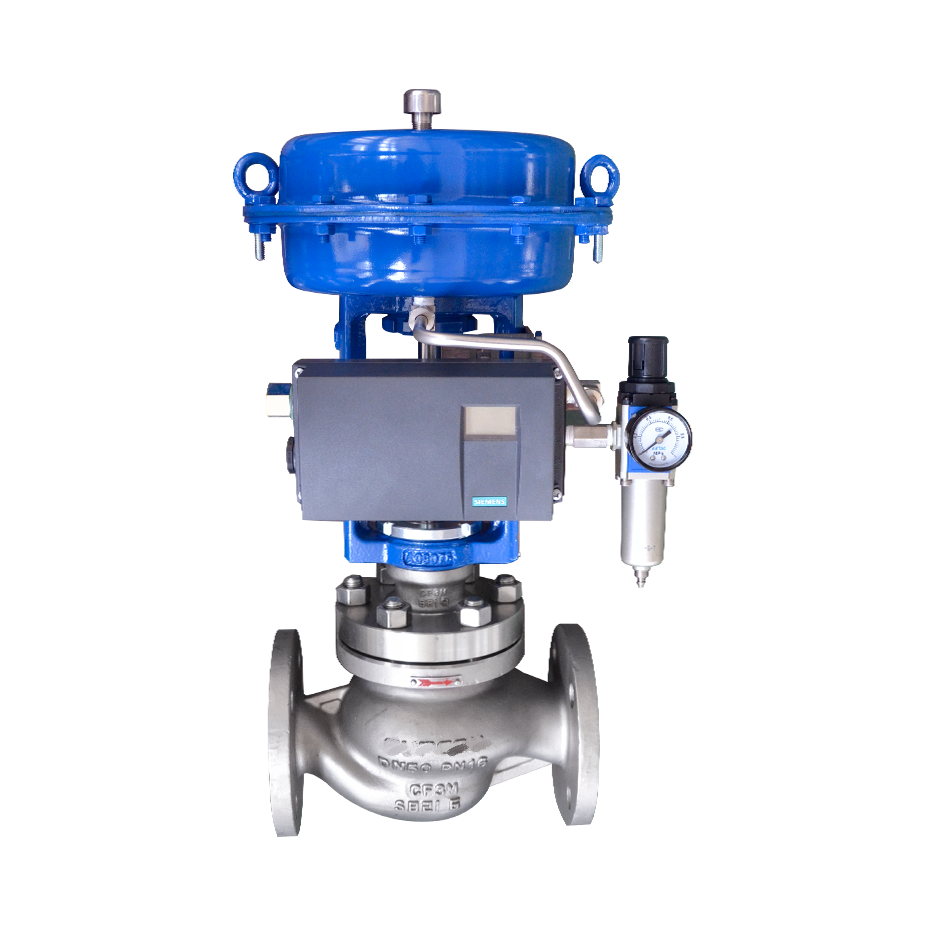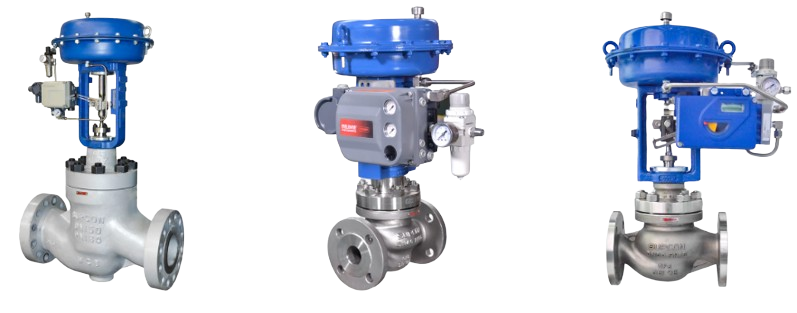
A pneumatic globe valve is a specialized type of control valve that utilizes compressed air or gas to regulate the flow of fluids within a system. Combining the precision control capabilities of a globe valve with the responsiveness of pneumatic actuation, this valve type offers enhanced automation and remote operation. Designed to offer highly accurate fluid control, pneumatic globe valves are vital components in a variety of industries, from chemical processing to power generation.
The core function of a pneumatic globe valve is to manage and adjust key parameters such as flow rate, pressure, or fluid levels with precision. Leveraging pneumatic pressure, these valves can be remotely controlled, providing flexibility and accuracy in dynamic environments. They are seamlessly integrated into automated systems, enabling real-time adjustments based on input signals. This makes pneumatic globe valves indispensable for maintaining optimal operational conditions in complex industrial systems.

A globe valve, in its simplest form, is a type of valve that controls fluid flow by adjusting a movable plug or disc within a spherical-shaped body. These valves are typically used for throttling applications, which involve regulating the flow of fluid rather than simply opening or closing the flow path. The design of the valve allows for highly controlled, linear motion of the closing member, which moves in and out of the seat surface to adjust the flow.
The spherical cavity around the port area of a globe valve gives it its name, and this design contributes to its ability to deliver precise throttling control. Globe valves are often equipped with actuators to automate their operation, enhancing their ability to manage fluid flow dynamically.
While the traditional globe valve is manually operated, the pneumatic globe valve adds a level of automation that improves response time, control accuracy, and operational efficiency. When combined with pneumatic actuation, globe valves are able to offer continuous, automated control that meets the needs of modern industrial systems.
Pneumatic globe control valves come with several key features and advantages that make them highly suitable for a wide range of industrial applications:
Pneumatic actuation allows these valves to be controlled remotely, eliminating the need for direct human intervention. This ability to control the valve’s position remotely makes it easier to adjust flow parameters without disrupting operations. Remote control capabilities are especially useful in environments that are hazardous or difficult to access.
Pneumatic globe valves are integral to automated systems, where continuous monitoring and adjustment are essential for maintaining optimal performance. Commonly employed in industrial settings such as chemical plants, refineries, and power plants, these valves can be integrated into control systems to facilitate automatic adjustments based on real-time process data.
These valves play a crucial role in ensuring process stability. By responding rapidly to changes in control signals, pneumatic globe valves can maintain consistent process variables, such as pressure, temperature, and flow rate. This feature is vital for preventing fluctuations that could affect product quality or system safety.
Pneumatic globe valves are often integrated into proportional-integral-derivative (PID) control loops, allowing for precise regulation of complex processes. PID loops use feedback to adjust the control variable and minimize errors, and the quick response of pneumatic globe valves enhances the performance of these loops.
Safety is a top priority in industrial processes, and pneumatic globe valves contribute significantly to operational safety. These valves can be programmed to respond to emergency shutdown signals, halting flow when dangerous conditions are detected. This safety feature is essential for preventing hazardous events in critical systems, such as power generation plants or chemical reactors.
In industries that require precise regulation of flow, pressure, or temperature, pneumatic globe valves are a valuable tool for process optimization. By providing fine control over these parameters, these valves help ensure that operations run efficiently and within the desired parameters, leading to enhanced productivity and reduced waste.
A pneumatic globe valve consists of several key components that work together to regulate fluid flow effectively:
The valve body houses the internal components of the valve, providing the structure for the valve to function. The body typically features a spherical cavity around the port area, which is integral to its ability to precisely control the fluid flow.
The plug or disc is the part of the valve that moves in and out of the valve seat to control fluid flow. Its movement is typically linear, which allows the valve to throttle flow precisely.
The actuator is the mechanism that moves the plug or disc. In pneumatic globe valves, the actuator is powered by compressed air or gas, which positions the plug in response to control signals. The actuator adjusts the flow based on the air pressure supplied to it, which can be modulated by a pneumatic controller.
The pneumatic controller regulates the air pressure supplied to the actuator. This pressure is adjusted based on the desired process conditions, such as flow rate, pressure, or temperature. By controlling the actuator's position, the controller enables the valve to respond dynamically to changes in the system.
The valve seat is the surface against which the plug seals when the valve is closed. A tight seal is essential for preventing leakage and ensuring that the valve performs its intended function. The design of the seat and plug influences the valve’s ability to control flow accurately and efficiently.
Pneumatic globe valves are widely used across various industries where precise flow control is required. Some of the key applications include:
In chemical plants, where precise control over fluids such as gases, liquids, and slurry is critical, pneumatic globe valves ensure that the right amount of fluid is allowed to pass through the system. These valves are used to regulate the flow of raw materials, catalysts, and other chemicals during processing, ensuring the correct chemical reactions take place.
In the oil and gas industry, pneumatic globe valves are used to control the flow of oil, gas, and other fluids in pipelines and refineries. These valves play a crucial role in regulating the flow of pressurized fluids, ensuring safe and efficient operations.
Pneumatic globe valves are essential in power plants, where they regulate steam, water, and other fluids in boiler systems, turbines, and cooling systems. These valves help maintain stable pressure and temperature levels, which are critical for the plant’s efficiency and safety.
In water treatment plants, pneumatic globe valves are used to control the flow of water through filtration and treatment systems. They help ensure that water is processed at the correct flow rates, contributing to the quality and safety of the water supply.
Pneumatic globe valves are also used in heating, ventilation, and air conditioning (HVAC) systems. They help regulate the flow of air or water through ducts, ensuring that temperatures are maintained at comfortable levels and that the system operates efficiently.
The pharmaceutical industry relies on pneumatic globe valves to precisely control the flow of chemicals and liquids during production. These valves help ensure the accuracy of formulations and help maintain strict quality control standards.
Pneumatic actuation offers several advantages over other types of actuation, such as electric or hydraulic systems. Some of the key benefits include:
Pneumatic actuators offer faster response times compared to electric or hydraulic actuators, allowing for quick adjustments to system conditions. This makes them ideal for processes that require rapid changes in flow rate or pressure.
Pneumatic systems are known for their reliability, especially in harsh environments. They can operate in extreme temperatures and are less susceptible to damage from dirt, moisture, and other contaminants compared to electrical systems.
Pneumatic actuation systems are generally more cost-effective than electric or hydraulic systems. The components required for pneumatic systems are typically simpler and less expensive to maintain, which can lead to lower overall operating costs.
Pneumatic systems are inherently safe because they do not require electrical components or the risk of fluid leaks associated with hydraulic systems. The use of compressed air reduces the potential for dangerous failures, making pneumatic actuation a safe choice in many industrial applications.
Pneumatic globe valves are crucial for industries that require precise control over fluid flow. Combining the reliability and accuracy of globe valves with the responsiveness of pneumatic actuators, these valves provide a versatile solution for a wide range of applications. From improving process stability to optimizing safety, pneumatic globe valves play an essential role in ensuring efficient and effective operation in industries such as chemical processing, oil and gas, power generation, and water treatment. With the ability to integrate into automated systems and respond dynamically to changing conditions, pneumatic globe valves continue to be a vital component in modern industrial operations.